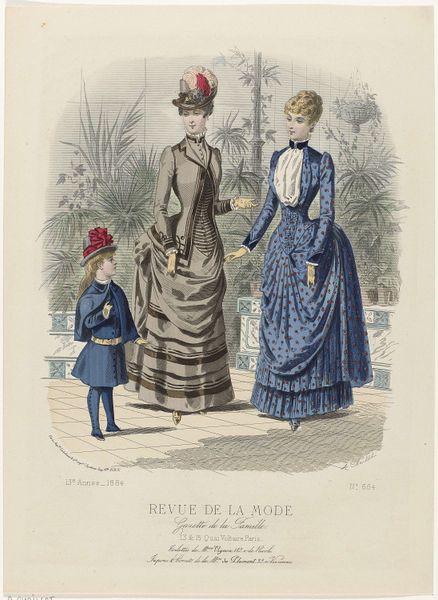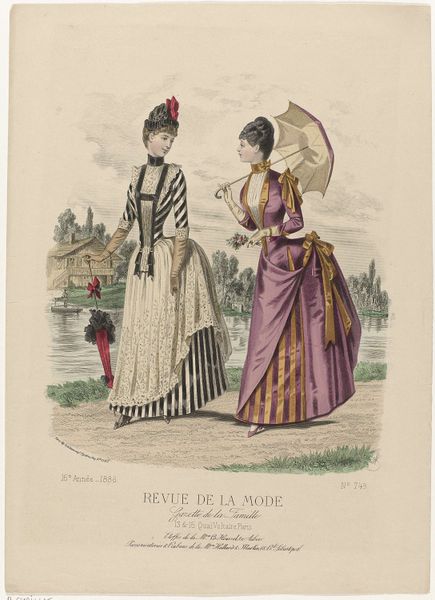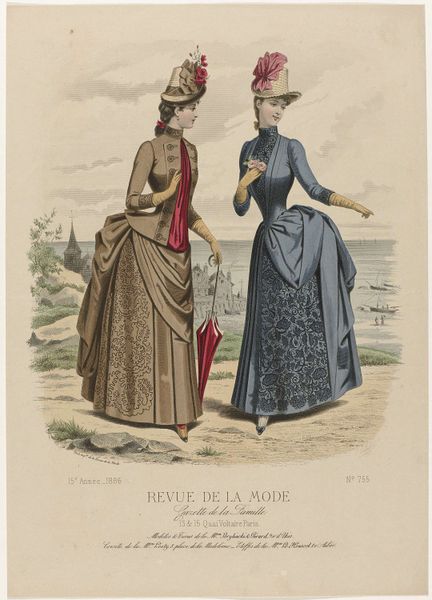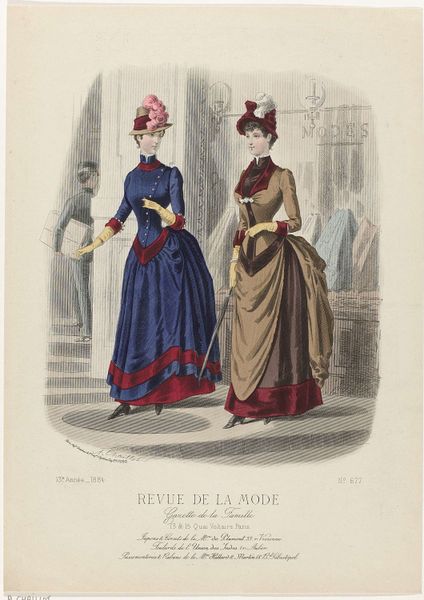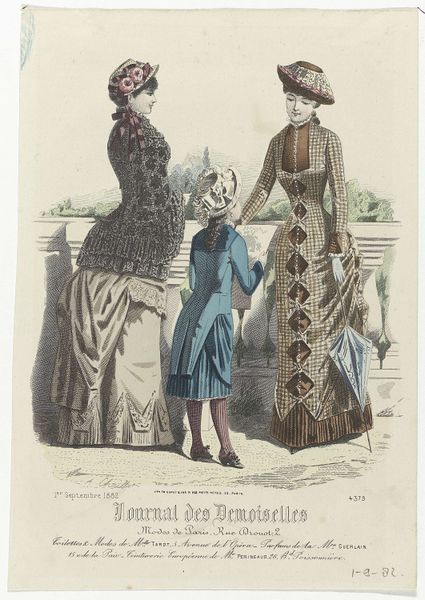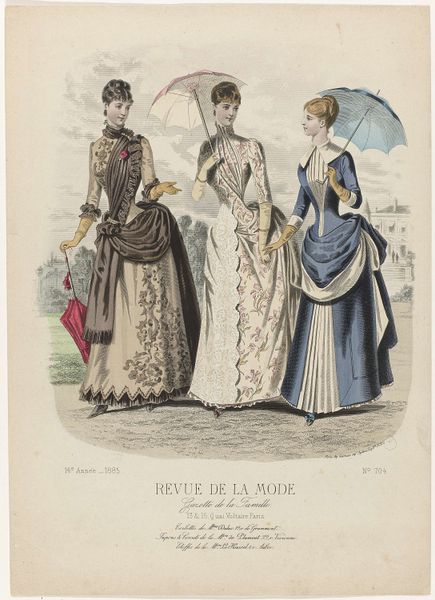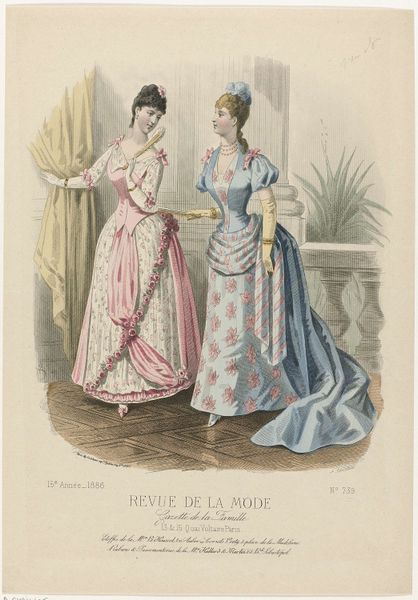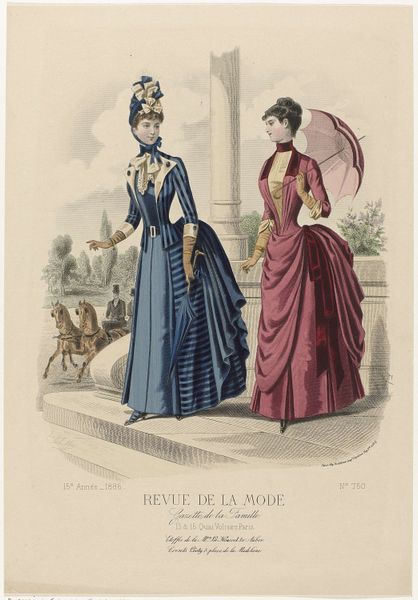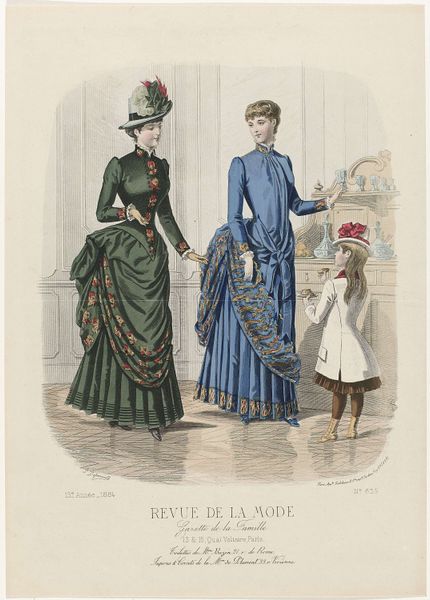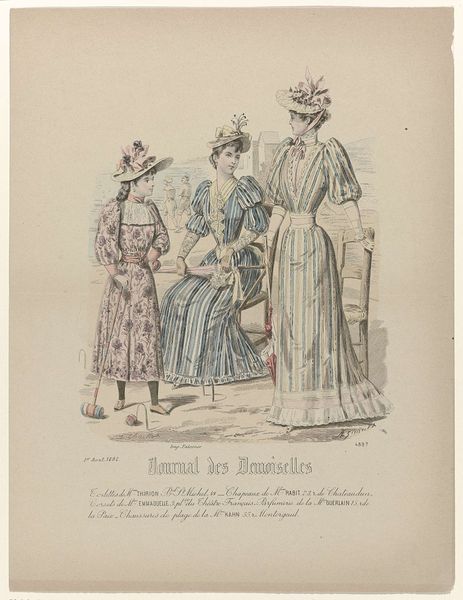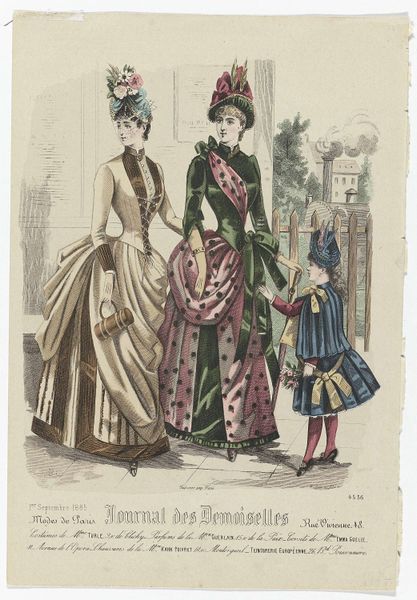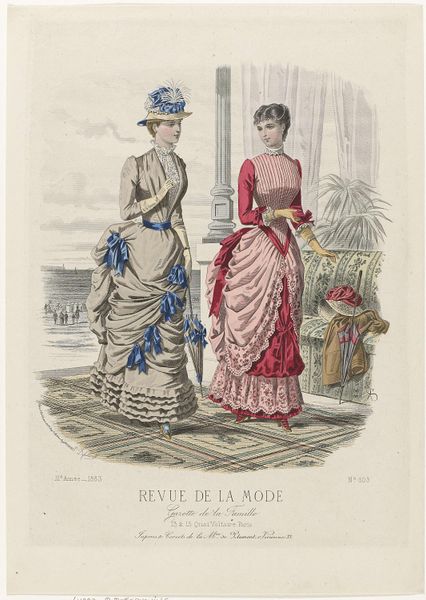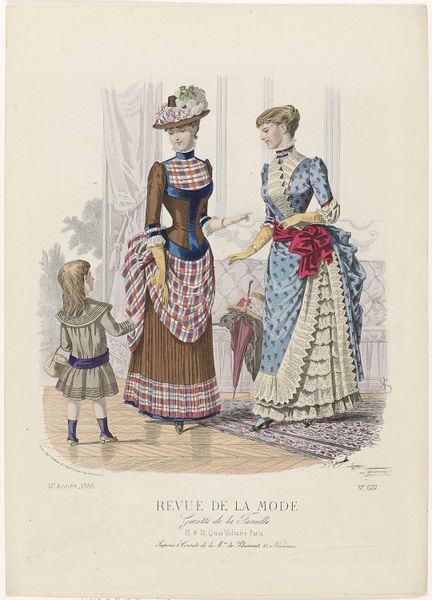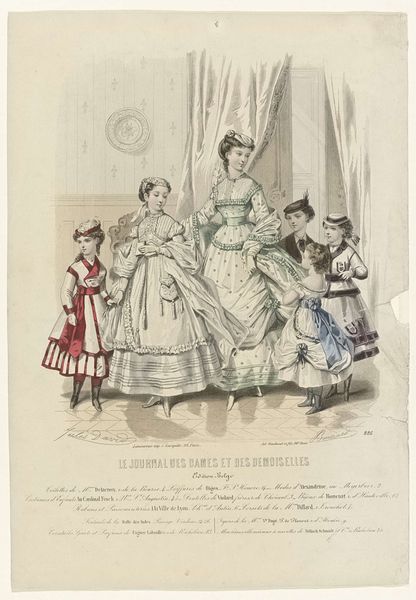
Revue de la Mode, Gazette de la Famille, dimanche 29 juin 1884, 13e Année, No. 652: Toilettes de Mme Fauvel (...) 1884
0:00
0:00
Dimensions: height 375 mm, width 268 mm
Copyright: Rijks Museum: Open Domain
This print, from the Revue de la Mode in Paris in 1884, offers us insight into the fashion and social values of the late 19th century. Fashion plates like these were more than just advertisements; they reflected and reinforced a rigid class structure. Note the emphasis on refined elegance, the impracticality of the garments, and the implied leisure activities. These details were all visual cues signifying the wearer's elevated social status. The backdrop, with its suggestion of a stately home, further reinforces this image of bourgeois respectability. Consider the cultural context: France during the Third Republic. The rise of industrial capitalism created a new class of wealthy elites eager to display their status. Publications like the Revue de la Mode catered to this market, shaping their aspirations and dictating the visual language of class distinction. As art historians, we can analyze such images using sources like trade records, social histories, and even literature of the period to better understand their cultural significance. This is how we can reveal the complex interplay between art, commerce, and social identity.
Comments
No comments
Be the first to comment and join the conversation on the ultimate creative platform.
